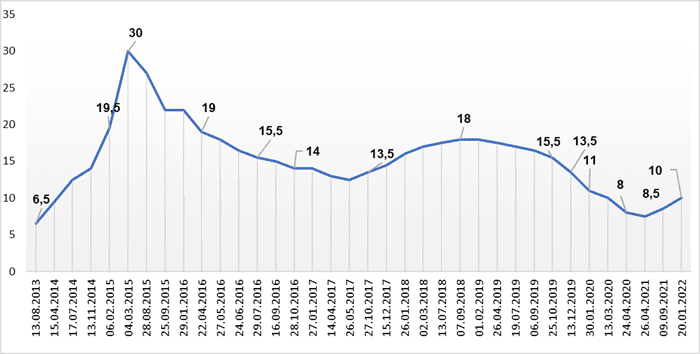
The Austrian authorities have decided to recognize “persona non grata” of four Russian diplomats, they must leave Austrian territory no later than April 12, the Oe24.tv portal reported on Thursday.
“The Austrian Foreign Ministry announced an order to deprive the diplomatic status of three employees of the Russian Embassy in Vienna and one employee of the Consulate General in Salzburg,” the portal notes.
According to the Austrian side, these diplomatic staff were engaged in activities incompatible with their diplomatic status, the portal notes.

Germany has already sent large volumes of weapons to Ukraine and is working to increase such supplies, the German Embassy reports, citing the German Defense Minister.
“Large volumes of weapons have already arrived in Ukraine from Germany. And we work hard every day to give her even more. Therefore, we are constantly in touch with the government of Ukraine […] But we do not talk about the details, for which there is a reason: Ukraine has clearly asked us about this, ”the embassy quotes the speech of German Defense Minister Christine Lambrecht in the Bundestag.
Dynamics of changes in discount rate of NBU

NBU

Advisors to the leaders of 7 countries, including the United States, Great Britain, Turkey, Poland, Germany, France and Israel, are ready to discuss a list of security guarantees for Ukraine, Ukrainian President Volodymyr Zelenskyy said.
“The meeting will definitely take place, because it was confirmed by representatives of the guarantor countries. Of the future. This applies to the United States, Great Britain, Turkey, Poland, Germany, France, Israel. These are not all guarantors, but I named those countries that are already ready to come and discuss a list of security guarantees,” Zelensky said in an interview with the Turkish Haberturk TV channel.
He stressed that it is important for Ukraine to know what kind of guarantees these countries are willing to accept.
“They have different views. Some of them are ready for anything, for full support. And some not for full support. Therefore, we need a joint meeting with these countries at the level of advisers who will talk about a future document – guarantees of our sovereignty, independence and territorial integrity “, – he said, adding that, “when Ukraine is satisfied with everything in the document, a meeting with the Russian side will take place.”
The head of state also noted that a meeting with the advisers of these 7 countries should be held in the near future. “And then – just as quickly – with Russia, because there is a war going on in Ukraine,” he added.

The Economic Security Bureau (BEB) is initiating the nationalization of more than 1,500 more Russian railway wagons.
“As of today, BEB has initiated the nationalization of the property of Russia and Belarus, as well as their citizens, with an estimated cost of over UAH 468 million (450 tank cars and 7 freight vehicles). issue of seizure,” the Bureau said on its website on Wednesday.
In particular, the export to Russia of 45 wagons of alumina with a total weight of more than 3,000 tons, belonging to the Nikolaev alumina refinery, has been halted.
At the same time, the Bureau clarifies that the assessment of inventory items is underway. After carrying out appropriate measures, the issue of their nationalization will be decided.
As reported earlier, the Economic Security Bureau (BEB) initiated the nationalization of 400 Russian and Belarusian railcars found in the Cherkasy region.

EXANTE, an international broker licensed in Cyprus and active in the Ukrainian markets, announced a $1 million donation to UNICEF to help children and families affected by the ongoing war in Ukraine.
“Our company was founded on the belief that freedom is an inherent human right, and at times like these it’s more important than ever. As a result, our shareholders feel compelled to take action – after all, actions speak louder than words. Whilst we cannot change what’s happening, together with our colleagues and clients we hope that the money donated will truly make a difference and help the thousands of children and families affected,” Alexey Kirienko, the CEO of EXANTE, said.
“UNICEF is rapidly scaling up its humanitarian response in Ukraine and in neighboring countries. To date, UNICEF has delivered 858 tonnes of emergency supplies, including health supplies, hygiene kits, education and recreation supplies for children and adolescents, in addition to winter clothing,” the report says.
“UNICEF is appealing for $349 million to provide critical life-saving support for children and their families. This includes $ 276 million to respond to immediate needs within Ukraine and $ 73 million for humanitarian needs in neighboring countries. This funding will help to support over 3.5 million people, including 2.2 million children,” it states.
Founded in 2011, EXANTE describes itself as a wealth-tech company providing centralized investment solutions and infrastructure for financial institutions. The company employs over 500 people and manages $1.6 billion.